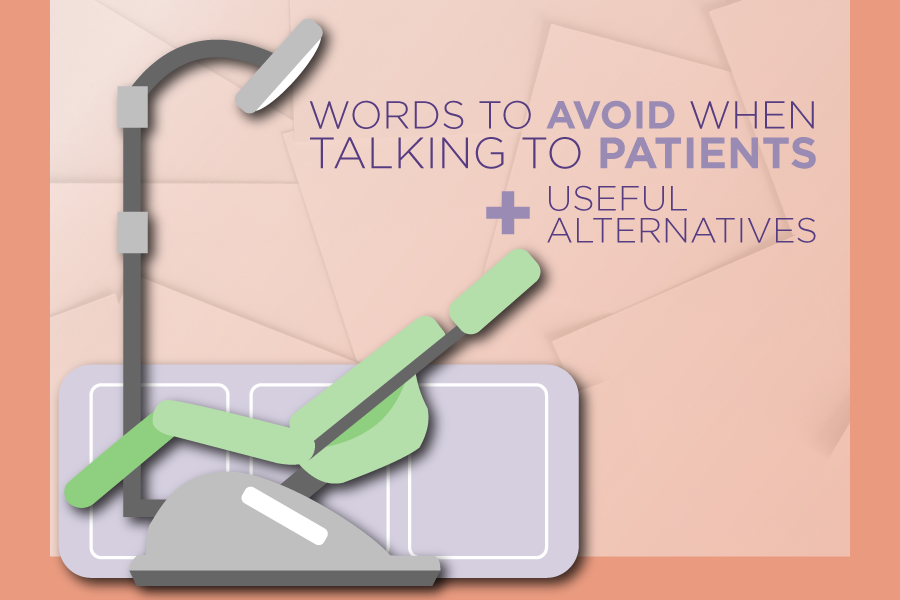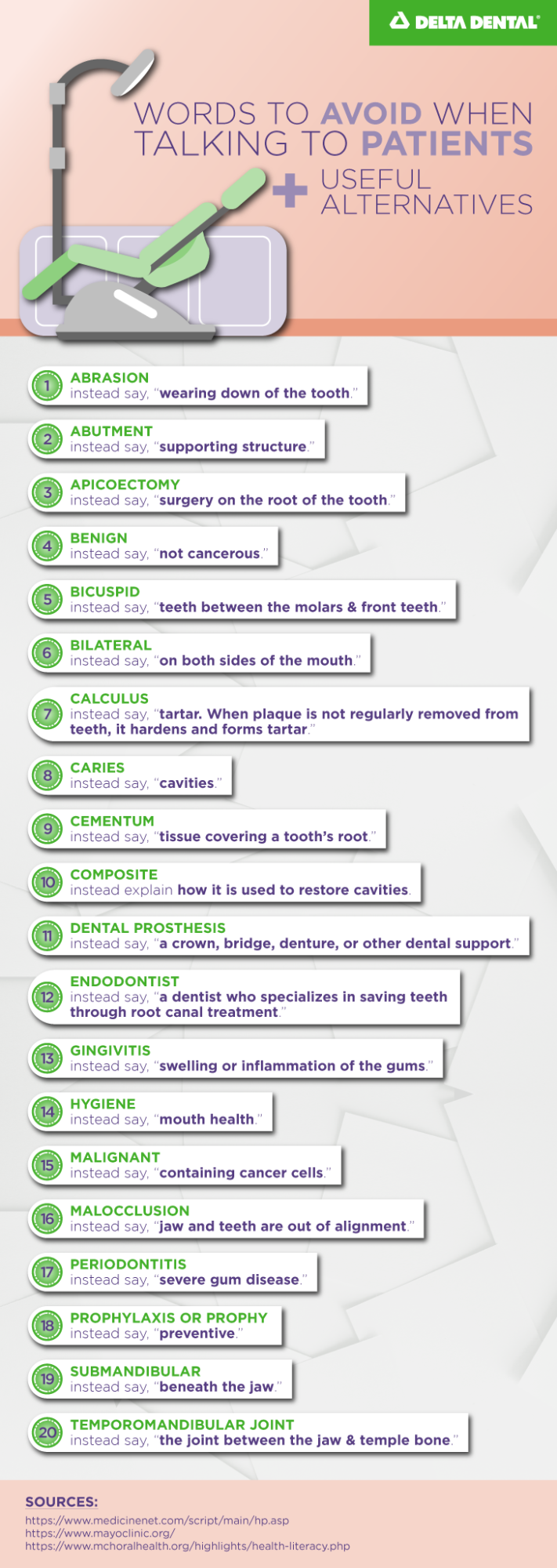Plain Language and Dental Health Literacy| Words to Avoid with Patients (B2B)
By Shelby Tatomir on April 3, 2020 in Insurance

Using plain language in the dental office means communicating with our patients so they understand the message the first time they hear or read it. By communicating with patients:
- In an active voice
- With short sentences, and
- With common, every day words, we’re more likely to leave a lasting impression on them with our message.
Plain Language and the Teach-Back Method
The teach-back method has been recommended for years in support of plain language and promoting understanding in the dental or doctor’s office. This method asks the patient to repeat the information back to the health care provider to ensure they understood the message.
Tips on how to use this method in your dental office include:
- Ask the patient to repeat the information or instructions during their appointment, or
- Ask the patient to tell you what their at-home care plan is and what instructions they are to follow.
Click here for more information on the teach-back method.
Using Visual Aids for Dental Health Literacy
Visual aids are another recommendation for promoting dental health literacy. It’s important to remember that not everyone is an auditory listener. By providing concrete materials for visualizing what the message is, we give our patients a higher chance of being on the same page as us for their treatment plan. Help them be successful by giving them resources to understand.
A patient’s at-home dental care behaviors are shaped by their dentist. A dentist’s advice for home care should be clear, concise , and straightforward.
Avoid Common Dental Jargon

For more tips on improving relationships with your patients, check out: